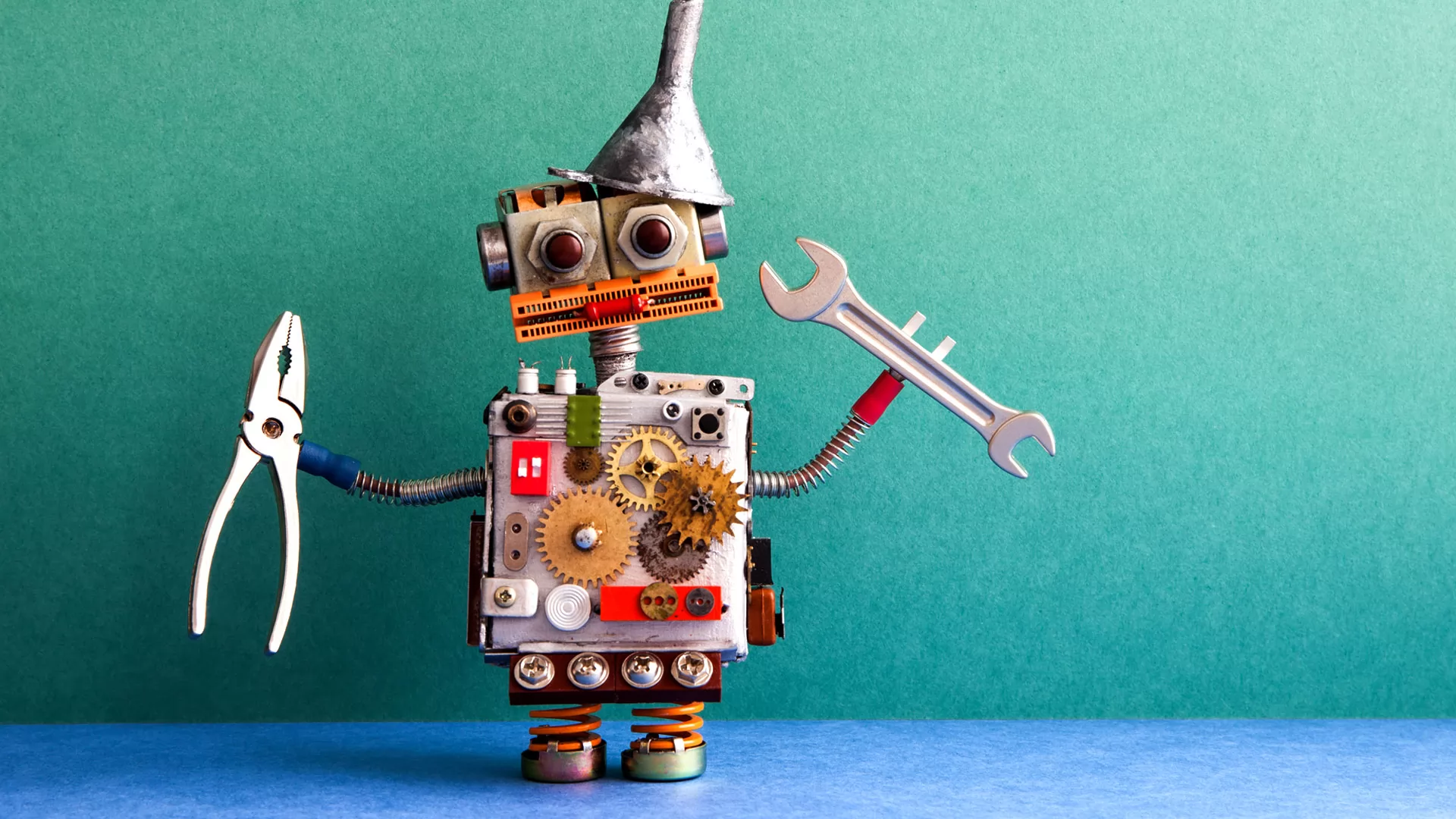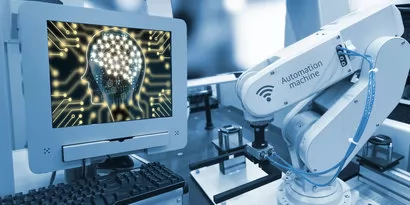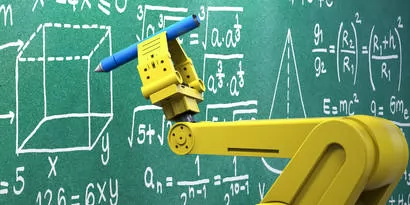
What is Machine Learning?
Machine Learning Overview
Smartphones, self-driving cars, highly intelligent virtual assistants...the collective vision of the future is within grasp as computers are becoming smarter by the minute. With the rise of the Machine Learning concept, it’s nearly impossible to overlook the many applications and devices that are currently leveraging the power granted by it.
As companies discover and fine-tune more and more uses for Machine Learning, the market demand is also on the rise. Last year, the global Machine Learning market reached the $1.4 billion mark. Researchers at BCC state that by 2022, this figure is expected to grow to an astounding $8.8 billion.
Now, what is Machine Learning? Machine Learning is a data analysis technique that gives computers the ability to learn, identify patterns and make decisions autonomously. Machine Learning stems from the field of Artificial Intelligence with the premise of minimizing human intervention and automating as many tasks as possible.
Interestingly enough, the Machine Learning concept originated in 1959 with Arthur Samuel but its rise as a dominant technology is only a few decades old. More rapidly than in any other time period in history, data is being generated in enormous quantities, it is now virtually impossible for us mere mortals to process, analyze, sort and gain insight from all the available data.
Instead, we use computers with Machine Learning capabilities to help us get the job done. Machine Learning plays a key role in data analysis as it automates the process and reduces the time necessary to analyze massive amounts of data.
Machine Learning Model
Now that we have a clear overview of what Machine Learning is, let’s talk about the different models available. Machine Learning Models come from different types of Machine Learning algorithm approaches. There are two types of Machine Learning techniques: supervised learning and unsupervised learning. Supervised learning trains a model to use known inputs and outputs of data to predict future outcomes. Unsupervised learning finds patterns in data based solely on inputs. Within these two techniques, there are subset techniques to develop predictive models.
For supervised learning, there are classification and regression techniques.
- The classification technique predicts simple outcomes by classifying input data into categories. Notable Machine Learning model algorithms include Naive Bayes, discriminant analysis, logistic regression, neural networks, and more.
- The regression technique predicts continuous responses. This technique works best with a data range or if the nature of the outcome is a numerical value. Notable Machine Learning model algorithms include the linear model, the nonlinear model, stepwise regression, bagged decision trees, and more.
For unsupervised learning there is clustering.
- Clustering is the most common technique and is used for exploratory data analysis to discover hidden patterns in data. Common model algorithms include hierarchical clustering, self-organizing maps, subtractive clustering, and more.
Here, we will briefly describe some algorithm models supported by Machine Learning platforms:
- Binary models: These models, as indicated in their name, provide binary results. In essence, they only provide one outcome out of two possible outcomes. This model uses the logistic regression learning algorithm.
- Multiclass models: This model enables users to generate predictions for multiple results. To put it simply, it is capable of predicting one or more than two possible outcomes. This model uses the multinomial logistic regression learning algorithm.
- Regression models: This model predicts a numeric outcome value. It uses the linear regression learning algorithm.
- Decision tree models: In this model, data is divided into clusters of similar data through discriminative criteria based on outputs or inputs such as numeric values, categories, and more.
- Neural network model: This multi-layered model determines the non-linear relationships between inputs and outputs.
Machine Learning Software
With the increasing hype around Machine Learning, competition is growing fierce in terms of the available software frameworks that handle Machine Learning capabilities. In this article, we list the most prominent Machine Learning software frameworks in the industry:
- TensorFlow: TensorFlow is an open source machine learning library that is designed for research and production. It does high-performance numerical computations through data flow diagrams. Given the flexibility that is embedded in the TensorFlow architecture, users only require an API to display computations across several platforms.
- Keras: Keras is an open source, high-level neural network library that is written in Python and designed to simplify the creation of deep learning models. It can run on top of TensorFlow, Microsoft Cognitive Toolkit (CNTK) and Theano. Keras allows for easy and fast prototyping, supports convolutional networks and recurrent networks (and combinations of the two), and runs smoothly on CPUs and GPUs.
- Microsoft Cognitive Toolkit: CNTK is an open source, deep learning toolkit that handles multidimensional data from Python, C++, or BrainScript to include a wide array of neural networks. This toolkit provides unlimited scaling, speed, and accuracy. Its components are capable of:
- Handling multidimensional data from Python, C++ or BrainScript.
- Supporting reinforcement learning, generative adversarial networks, and supervised and unsupervised learning.
- Adding new core components on the GPU from Python.
- Tuning of automatic hyperparameters.
- Theano: Python library that defines, optimizes, and evaluates mathematical expressions that involve multidimensional arrays. It is tightly integrated with NumPy, native libraries such as BLAS and native code such as C++. It provides large-scale computations for intensive scientific research.
- PyTorch: This high-level, deep neural network uses Python and an evolved Torch C/CUDA backend. It provides seamless research prototyping and fast production deployment capabilities. PyTorch provides a new hybrid front-end, deep integration with Python, and a rich ecosystem of tools and libraries.
Best Language for Machine Learning
Actually, there is no absolute best language for Machine Learning. With that being said, there is a clear winner in the popularity race of programming languages and that label is reserved for Python. Python is the most popular programming language for Machine Learning technologies due to its ease-of-use, large choice of libraries, sound structure, and moderate learning curve.
Python is specifically used in Machine Learning for model development and prototyping. It’s safe to say that even though Python is the most popular programming language, it is not the best one.
Another widely-used programming language is C++, which is an object-oriented language based on the C programming language. For Machine Learning, it is largely used for parallel computing and implementations of algorithms on CUDA, which is a Nvidia GPU compute platform.
R is another language that is used for statistical computing and graphics in Machine Learning. It is a language and an environment that is best suited for visualizations and data analysis as it provides several techniques such as classical, linear and nonlinear modeling.
Most developers base the choice of a specific programming language based on the type of project they are about to embark on, professional background, features, capabilities, algorithms, and more.
AI vs Machine Learning
The terms Artificial Intelligence and Machine Learning are used interchangeably with such a high frequency that they are now thought of as very similar concepts. But the reality is that these two concepts are different and each one has its key characteristics.
First, Artificial Intelligence is the field from which Machine Learning comes from, as we stated at the beginning of the article. Artificial Intelligence is intelligence displayed in machines. Investopedia actually defines Artificial Intelligence as the “term for simulated intelligence in machines.” In AI, machines are programmed to behave, act and decide as a human would.
So what are the main AI vs Machine Learning differences? On one hand, Artificial Intelligence machines don’t perform a single, repetitive action. Instead, they adapt to different situations and react accordingly, displaying human-like intelligence. On the other hand, Machine Learning computers process data and learn without human supervision. Machine Learning computers aren’t programmed to perform a specific task - they are programmed to access a wealth of data and learn autonomously from it.
In essence, here is the simplest answer to AI vs Machine Learning question. Artificial Intelligence is the broad science field that replicates human capabilities while machine learning is a subfield of Artificial Intelligence that programs machines to learn from data.
Machine Learning as a Service
Machine Learning as a Service (MLaaS) is the collection of machine learning tools as part of cloud computing platforms that cover infrastructural concerns such as data processing, model training, model evaluation, and predictions. Currently, there are four leading MLaaS service providers: Amazon Machine Learning services, Azure Machine Learning, Google Cloud AI, and IBM Watson.
These MLaaS service providers offer tools such as predictive analytics, computer vision, deep learning, facial recognition, APIs, data visualization, speech recognition, natural language processing, and more. They identify patterns in data via specific algorithms, which makes it possible to create models that make insightful predictions.
As a result of this comprehensive service offering, MLaaS providers are driving the digital transformation in AI. MLaaS make it straightforward for companies to leverage machine learning capabilities as it is very simple to enhance business processes and operations with an easy setup of machine learning services.
Just like with any other cloud service, the biggest selling-point of using MLaaS is it is easy and quick to get started and avoids the need to install a hefty software platform or servers.
Conclusion
Machine Learning has a bright future. As each day goes by, we become more heavily dependent on machines and computers. Machine Learning software is revolutionizing the way we enjoy technology and it’s clear that in just a couple of years, almost all applications will include some degree of Machine Learning technologies.
According to Gartner, the top strategic trends for 2019 include fields related to Machine Learning such as AI-driven things, augmented analytics, and AI-driven development. These fields are all deeply rooted in the benefits that Machine Learning offers and data scientists are leveraging Machine Learning platforms to transform how businesses generate insights.
Organizations that strive for digital transformation are becoming aware of how Machine Learning works to drive significant business value by having machines understand, learn, predict, adapt and operate tasks autonomously. Devices and systems are becoming more intelligent, and now it is only a question of how long we can keep up with this digital revolution without being fully outsmarted.
Let's discuss your project
We look forward to learning more and consulting you about your product idea or helping you find the right solution for an existing project.
Your message is received. Svitla's sales manager of your region will contact you to discuss how we could be helpful.





